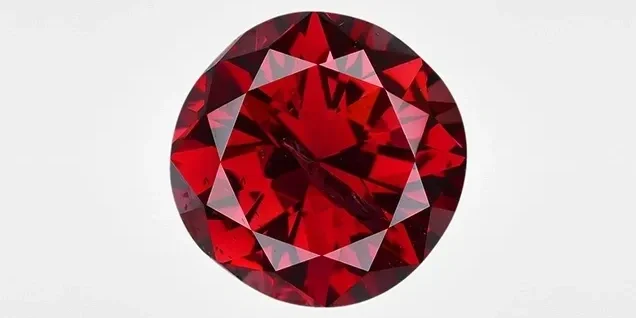The Carlsbad laboratory recently received a 1.21 ct Fancy orangy red round brilliant cut diamond (6.62–6.84 × 4.14 mm; see above) for a colored diamond grading and identification report. Results of standard gemological testing and microscopic observation confirmed it had a natural color and no color treatment or clarity enhancement. The stone displayed faint fluorescence under long-wave UV and none under short-wave UV. Fourier-transform infrared spectroscopy indicated a type IaB diamond, while ultraviolet/visible (550 nm band and H3 [503.2 nm] center) and photoluminescence (PL) spectroscopy indicated natural color without any treatment. The 550 nm absorption band is closely linked to plastic deformation, which is clearly reflected in the broad emission features in the PL results. Due to the extensive plastic deformation, some fractures could have developed.
The rarity and high value of red diamonds has resulted in many attempts to reproduce this color through treatment or even laboratory growth procedures with post-growth treatment. However, treated red diamonds are often accompanied by purplish or brownish color components that are not desirable and are different from the purer hues of naturally red diamonds. Natural-color red diamonds are so rare that only around a couple dozen true red diamonds are known to exist, and most of these are under half a carat.
The exceptional natural-color 1.21 ct Fancy orangy red diamond examined here is a fine example of natural-color red diamond. It has yet to be named.

